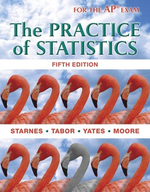Solution Found!
Multiple choice: Select the best answer for Exercises 51 to 56. When analyzing survey
Chapter 11, Problem 56(choose chapter or problem)
Multiple choice: Select the best answer for Exercises 51 to 56.
When analyzing survey results from a two-way table, the main distinction between a test for independence and a test for homogeneity is
(a) how the degrees of freedom are calculated.
(b) how the expected counts are calculated.
(c) the number of samples obtained.
(d) the number of rows in the two-way table.
(e) the number of columns in the two-way table.
Questions & Answers
QUESTION:
Multiple choice: Select the best answer for Exercises 51 to 56.
When analyzing survey results from a two-way table, the main distinction between a test for independence and a test for homogeneity is
(a) how the degrees of freedom are calculated.
(b) how the expected counts are calculated.
(c) the number of samples obtained.
(d) the number of rows in the two-way table.
(e) the number of columns in the two-way table.
ANSWER:Step 1 of 2
The number of samples obtained is the only distinction between homogeneity and independence tests.
